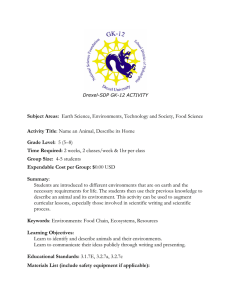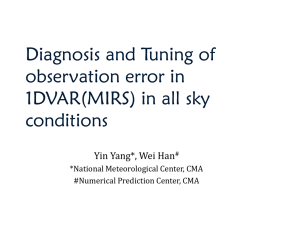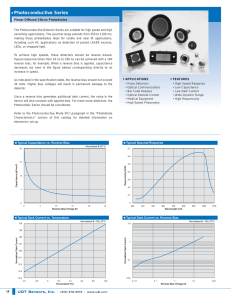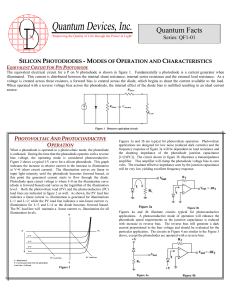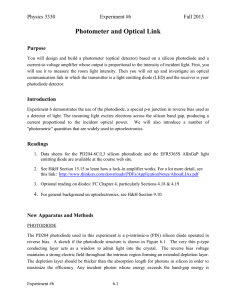Activity
advertisement
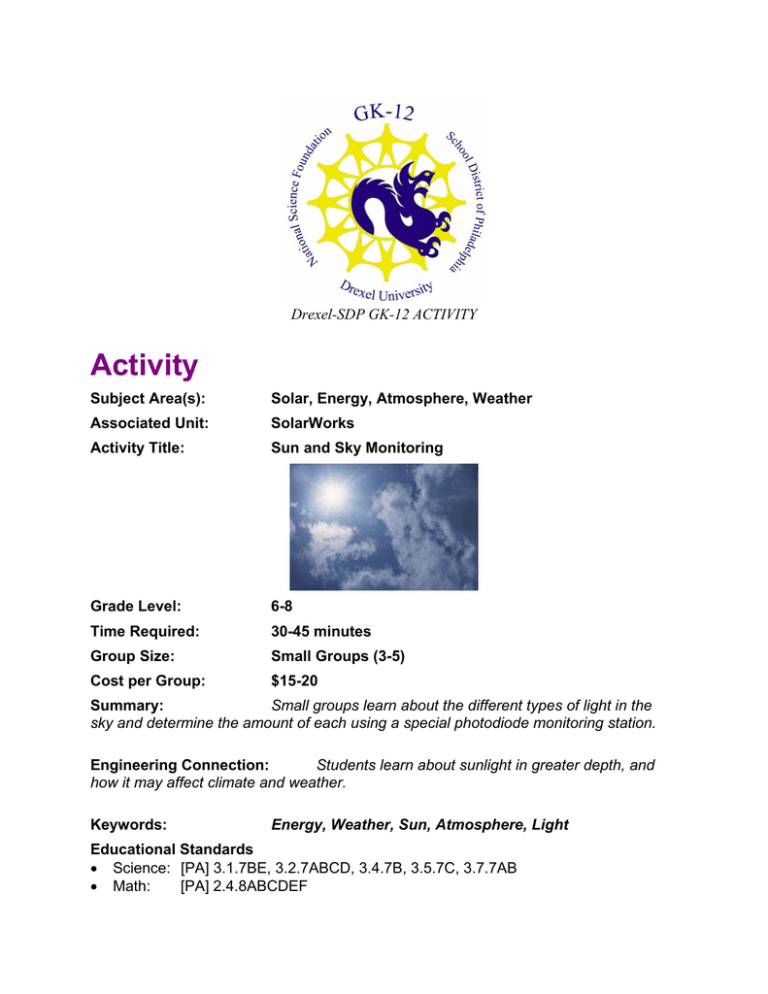
Drexel-SDP GK-12 ACTIVITY Activity Subject Area(s): Solar, Energy, Atmosphere, Weather Associated Unit: SolarWorks Activity Title: Sun and Sky Monitoring Grade Level: 6-8 Time Required: 30-45 minutes Group Size: Small Groups (3-5) Cost per Group: $15-20 Summary: Small groups learn about the different types of light in the sky and determine the amount of each using a special photodiode monitoring station. Engineering Connection: Students learn about sunlight in greater depth, and how it may affect climate and weather. Keywords: Energy, Weather, Sun, Atmosphere, Light Educational Standards • Science: [PA] 3.1.7BE, 3.2.7ABCD, 3.4.7B, 3.5.7C, 3.7.7AB • Math: [PA] 2.4.8ABCDEF Learning Objectives After this lesson, students should be able to identify output voltages of a photodiode to make theoretical predictions about the weather, its change, and plot the differences in light color in terms of percentages. Materials List Each group needs: Notebook, Sun and Sky monitoring station, calculator Introduction / Motivation: This activity should be done after a introduction to light and its components. Students should already realize that sunlight consists of different colors, which may be seen via a prism. The monitoring station has a device inside called a photodiode, which collects light at specific wavelengths (or colors) and produces a certain voltage depending on the intensity of the light. Vocabulary / Definitions Word Definition Photodiode Devices that produce electricity from light Procedure Before the Activity • Students should be asked some of the following questions to put in their notebook while forming a hypothesis o What color light, green or red, do you expect to see more of on a clear day? A cloudy day? Do you think you’ll more of the same color on both days? o Why do you think the sky is blue? With the Students 1. The Sun and Sky monitoring station from Radio Shack comes with a very easyto-follow guide on its setup and operation. The students should be able to do this on their own with a little supervision. Though discontinued, the unit typically costs 15-20 dollars on ebay and has over 50 activities. 2. Students may connect the resistors (color coded) into the spring clips as marked on the station. Make sure they do this with the power off, as a safety precaution. 3. Once setup, students may remove the top cover to the photodiodes and turn the dial so it reads red light. The should record the value every minute for 5 minutes, then take an average, creating a chart in their notebooks. 4. Repeat step 3 for green light. 5. Compare the average values for red and green via percentage. This can be done by dividing the smaller value by the larger value and subtracting from 1 then multiplying by 100. This can go into their conclusions. 2 Assessment: • • How close were the predictions to the two questions above? (Typically humans see green light the most, so green should be the biggest amounts) How do the students feel clouds would affect these measurements? If they were given certain numbers for voltages, they should be able to determine whether it’s a cloudy, partly cloudy or sunny day. Safety Issues: Don’t look into the sun. References: Sun and sky monitoring system workbook Owner Drexel University GK-12 Program Contributors: Adapted by Stephen Nonnenmann Copyright Copyright 2007 Drexel University GK12 Program. Reproduction permission is granted for nonprofit educational use Version: Mar 2007 3
